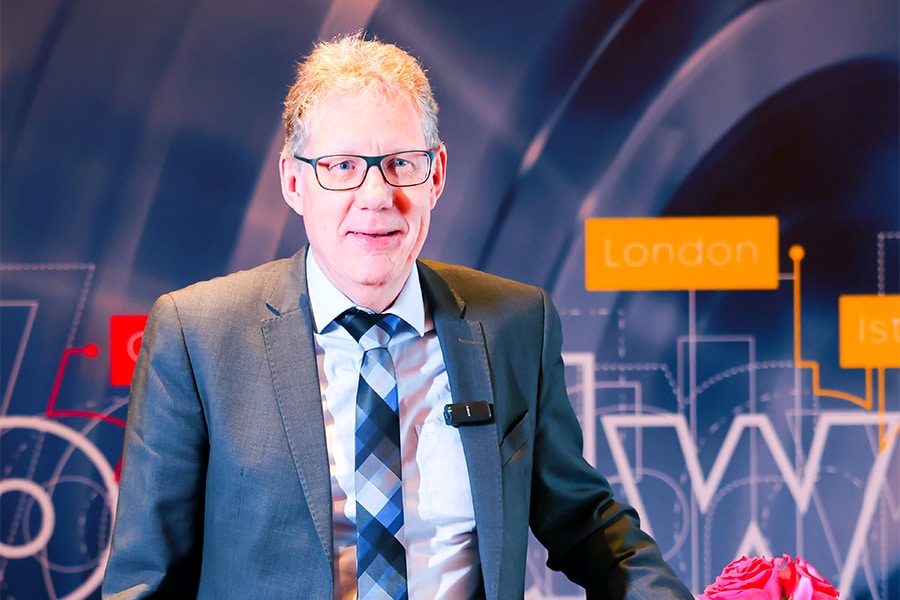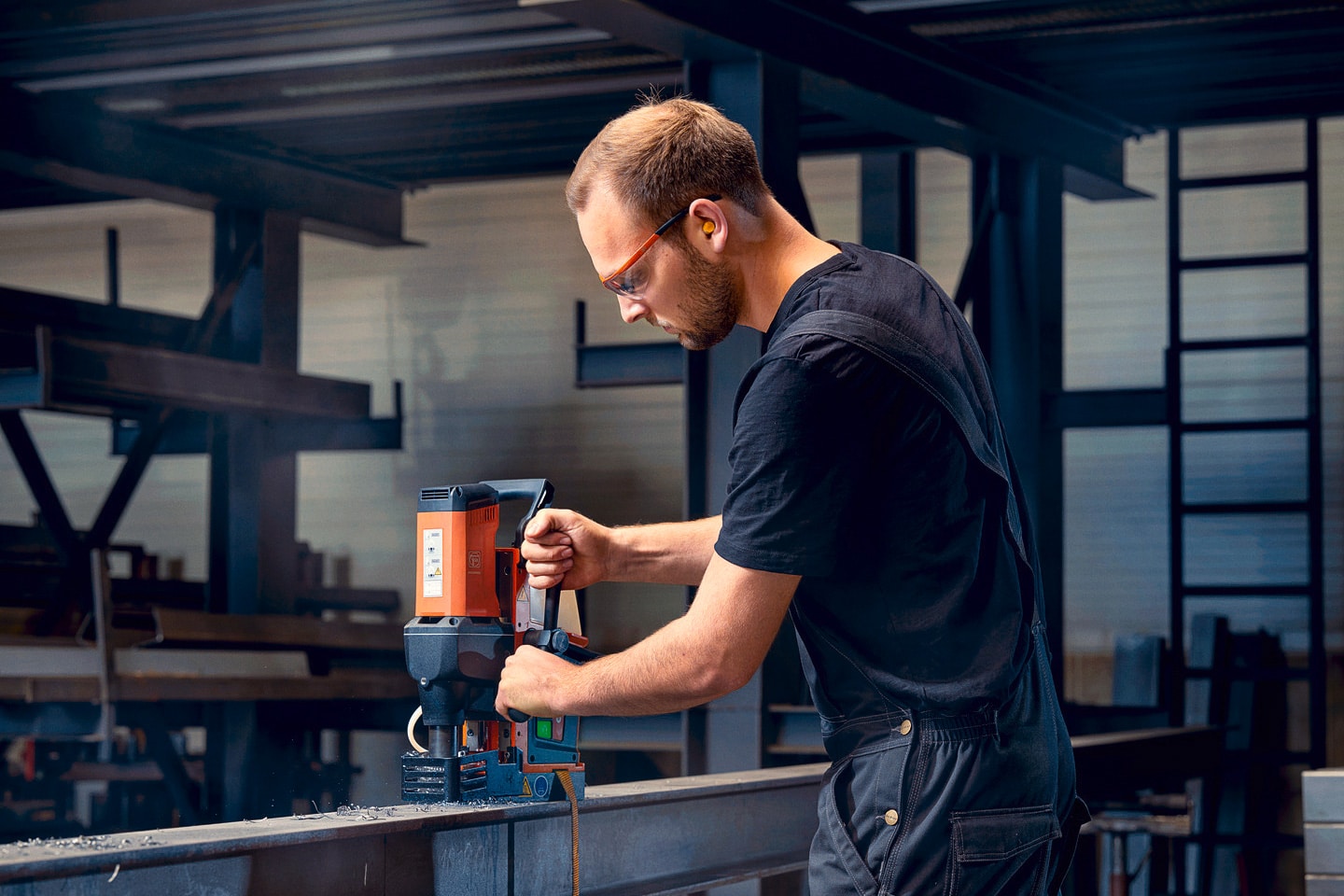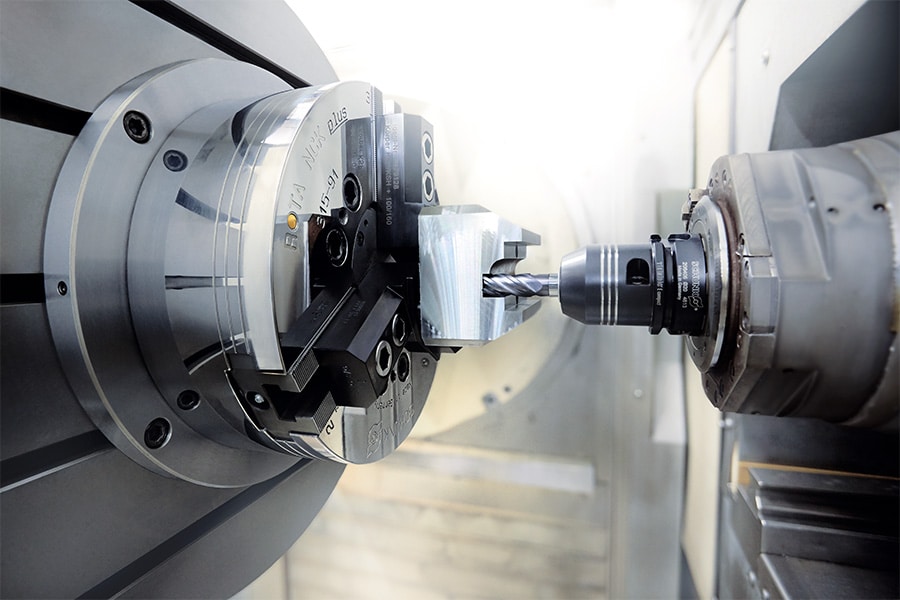
Inspiration for a smarter, more efficient sawing department
Four years. That's how long it had been since Behringer's Steel Days. So plenty of candidates to take a pulse on the latest state of sawing technology at Behringer headquarters in Kirchardt. A visit in which inspiration takes center stage. Because you not only see the machines you know, but you also get to know other and perhaps better ways to set up your sawing department. After all, Behringer is pulling out all the stops to help support its customers in building the sawing department of the future.

The sawing department is at the very front of the production chain. It delivers the pieces to size, after which it is up to other machine tools to get the products all the way to the right shape. "That makes quality crucial here. Always has been, and always will be. You can make it so much easier on yourself in further production by leaving with perfect dimensions. That's why quality is always paramount at Behringer. In the design of the machines, but just as much in the control, the built-in control mechanisms, right down to communication and documentation." Speaking is Hagen Lutz, project manager at Behringer.

Cost per cut as low as possible
He provides explanations to one of the showpieces in aluminum production: the Behringer Eisele VA-L560 NC3. A machine that, like a knife through butter, cuts aluminum to size. "With larger diameters, the robot can still keep up, but when the smaller diameters pass on the machines, then it is hopeless," Lutz explains with a wink.
Behringer is showing the machine at Steel Days in all its glory. That is, with all possible automation options available, or all the control steps the customer still wants. "Through our off-the-shelf interfaces, we can even link to automation solutions from the customer himself or with the machining machines that are waiting for their material further down the line. So the machine itself can respond flexibly to the needs in production, but above all it has all the features to keep the cost per cut as low as possible." One hall down, by the way, we run into the counterpart for those who want to process steel with the Behringer HCS 150 E.
Planting seeds
An impressive piece of engineering that is obviously not just plucked off the rack. "The great thing about this machine and this kind of project is that you work very closely with the customer to come up with real solutions that work best for him. You bring your experience about the possibilities of technology, he the knowledge about his products, and together you build something new. This is not a typical installation, it often takes time and a lot of creative thinking. But the results are worth it and the satisfaction is great," says Marco Toebes, director of Benelux supplier Promatt. "That's why we always ask to bring as many customers as possible to the Steel Days. You learn to look at your own production in a different way. You get tons of inspiration on how things could be done differently and better. Seeds planted that can then lead to more efficient production for several years."

Saws and 3D printers
This year, the Benelux delegation consisted of about fifteen customers who, spread over the three-day event, made their way to just above the Black Forest. Along with more than 750 other guests, they were also introduced to the solutions Behringer has to offer in terms of 3D printing. Because to get the 3D printed pieces off the base plate, an efficient sawing installation is needed. At Behringer, this is available in horizontal or vertical versions, but always with a clamping system that can make all the difference.
"Machines that have been in the range for one or two years, but perhaps haven't yet received the attention they deserve, just because there was no space for this kind of event," says Sabine Toebes, also director at Promatt. "You also feel it's not really alive in the industry yet. But Behringer is convinced that it's coming and is therefore already fully ready for it."

Drill Streets
By the way, these installations are next to AM Solutions, a brand of Rösler, which realizes perfect surface quality of 3D printed pieces. Not coincidentally, since Rösler is one of the companies in the Partners 4 Steel program that also includes Behringer and Vernet. So Vernet's drilling lines were not missing from the tour either.
"Surely these installations open the eyes of a lot of customers. They are built according to the material, shape and dimensions, and are also given the periphery that the customer wants according to the degree of automation. The most striking of the two versions is the HD-X, which is equipped with additional axes for each of the three spindles. So you can realize different operations without having to clamp the material again. Faster and more accurate, in other words. Of course, it depends on the application you have, but for the price difference with the HD-S, you get a lot of added value," summarizes Marco Toebes.

Automatic vertical band saws
At the very end of the walk through the Behringer production halls, we find one last "specialleke": the LPS-A automatic vertical band saws, whose size alone makes them worth those extra hundred meters.
"Indeed, you don't see these set up every day. They serve to cut thick metal sheets, up to even 600 mm thick, perfectly to size, often as an alternative to cutting torches. They already have the better cutting edges, lower energy consumption, tighter tolerances and less heat input ahead of cutting torches. But they also stand out because there is a lot less handling involved. After all, the cutting head can rotate to make a second, transverse cut. In addition, it is equipped with numerous features that ensure perfect control. With it, you can cut square blocks from thick plates very efficiently and surprisingly quickly," concludes Marco Toebes. ■

Twenty years of Promatt
The return of Steel Days was not the only good news. Promatt also has something to celebrate this year. After all, the company is celebrating its 20th anniversary. "Together with my father, I took this leap of faith in 2003. With a scared heart, because you have to wait and see what it gives to start your own company. But of course it helps to have a strong brand like Behringer behind you. When you look under the hood of the machine and see the castings that make it up, you know where that quality comes from. And our enthusiasm for working with customers to make it their fit for future sawing departments."
Own foundry
Anyone who has been to a Rammstein gig felt right at home in Behringer's foundry. The protective clothing of the employees guiding the molten material to the proper molds seemed very familiar. By the way, the foundry can call itself one of the most modern and automated in the world. It was rebuilt in 2010, achieving energy savings of 550 kWh per ton of material. The fact that Behringer wants to continue making its own castings has everything to do with the quality they strive for, there in Kirchardt. "That way they keep the entire process under control. And did you know they keep all their old molds? If someone still needs a casting from a machine from days gone by, it can still be made in principle," Sabine Toebes says.



